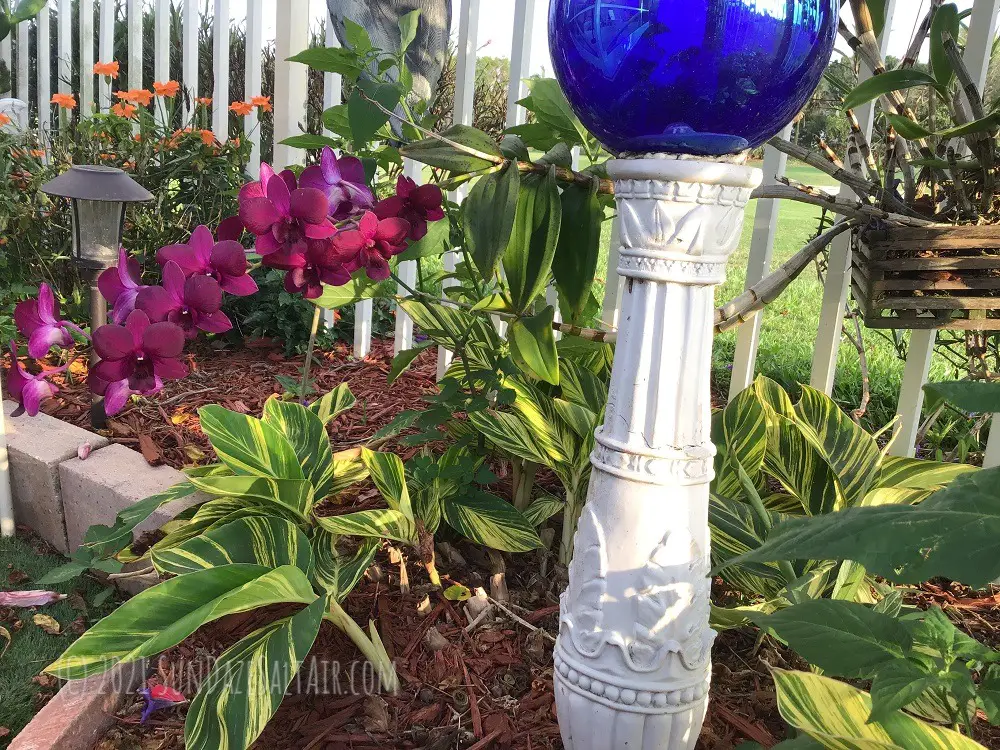
How To Care For A Dendrobium Phalaenopsis Orchid, One Of The Easiest Orchids To Grow
How To Treat & Care For A Dendrobium Phalaenopsis, An Easy Orchid For Beginners
Next to Phalaenopsis, Dendrobium Phalaenopsis are among the most popular types of orchids grown by the home gardener — for good reason. With the potential for profuse and cascading displays of beautiful flowers that last for months at a time, Dendrobium Phalaenopsis is a must-have addition to any gardener’s collection. There are few things as inviting as stepping on a front porch to be greeted by a spectacular display of Dendrobium Phalaenopsis flowers spilling out of a hanging basket. On top of their obvious aesthetic appeal, however, I find my Dendrobium Phalaenopsis to be among the easiest of my orchids to grow and care for — if you have the space for them. Read on to learn about the particular features that make Dendrobium Phalaenopsis a great, fairly low-maintenance orchid for beginners. Plus, learn helpful tips to understand and care for your own Dendrobium Phalaenopsis.
But, first, a few facts about the Dendrobium Phalaenopsis orchid…
What Do Dendrobium Phalaenopsis Orchids Look Like?
How Does The Dendrobium Phalaenopsis Compare To The Regular Phalaenopsis Orchid?
Despite its name, the Dendrobium Phalaenopsis has little similarity with the Phalaenopsis orchid and is really not even closely related. Instead, the Dendrobium Phalaenopsis is a member of the Dendrobium family of orchids, a diverse family of orchids that includes around 1,500 individual species native to parts of Southeast Asia and Australia. As a Dendrobium, the Dendrobium Phalaenopsis is a horizontally-growing sympodial orchid in contrast to the vertically-growing monopodial Phalaenopsis.
How Much Space Does A Dendrobium Phalaenopsis Need Compared To A Phalaenopsis?
Since the Dendrobium Phalaenopsis grows horizontally in size, it can take up quite a bit of space. Because it can grow quite wide and spread out, it is probably not ideal for someone gardening in a very small space, for which the smaller Phalaenopsis is a much better option.
Why The Name Then? Dendrobium Phalaenopsis Vs. Phalaenopsis Orchid Flowers
The one similarity between the two orchids, and the likely reason for the similar name, is the appearance of their flowers. Dendrobium Phalaenopsis flowers closely resemble the shape and size of the delicate Phalaenopsis or “Moth” orchid blooms. Plus, Dendrobium Phalaenopsis and Phalaenopsis both display their flowers on characteristically long flower spikes, also known as an inflorescence.
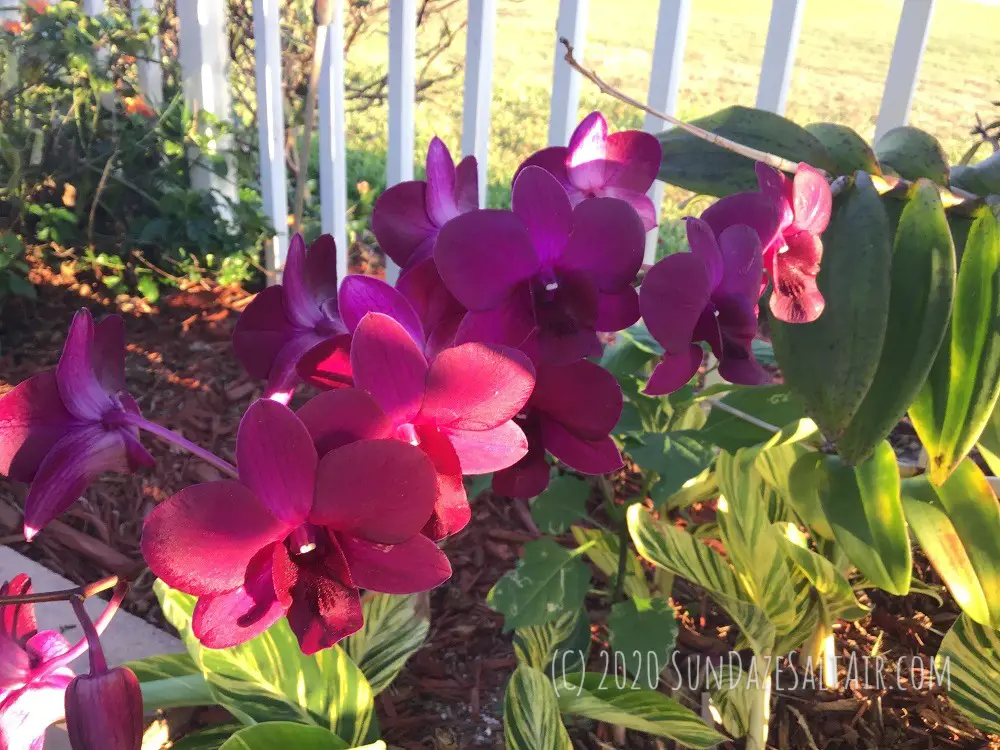
Sympodial Vs. Monopodial Orchids – Horizontal Vs. Vertical Growth Considerations
In contrast to the vertical growing monopodial Phalaenopsis, the sympodial Dendrobium Phalaenopsis expands in width with each new “cane” or root system, also known as pseudobulbs, as it grows. These canes or pseudobulbs also serve the important purpose of providing water and food storage for your plant. Eventually, with time, your Dendrobium Phalaenopsis will grow multiple canes or pseudobulbs. The more canes or pseudobulbs your Dendrobium Phalaenopsis has, the more potential storage it has and the larger it gets. So, not only will you need more space to grow a Dendrobium Phalaenopsis than a Phalaenopsis, but you will also have different watering considerations as well.
Dendrobium Phalaenopsis Pseudobulbs & Water Storage
The Dendrobium Phalaenopsis produces about one new cane each year plus one or more flower spikes. These canes or pseudobulbs enable the Dendrobium Phalaenopsis to store more water and nutrients than a Phalaenopsis, which lacks pseudobulbs, can. Therefore, in the event of a drought, a Dendrobium Phalaenopsis will fare much better than a Phalaenopsis.
What Do Dendrobium Phalaenopsis Canes Look Like?
Dendrobium Phalaenopsis canes are slender and can grow quite long with leaves growing out of either side of them causing the Dendrobium Phalaenopsis to somewhat resemble a Vanda orchid from a distance. When the canes or pseudobulbs mature, after about nine months, you will begin to notice flower spikes emerge growing from the top of these mature canes.
Bottomline: The Dendrobium Phalaenopsis Expands In Width & Ability To Store Sustenance
Dendrobium Phalaenopsis pseudobulbs increase in number each year giving the plant the potential to grow fairly large and wide. This unique feature also allows it to be fairly drought-tolerant and a bit more self-sufficient than the single-stemmed Phalaenopsis.
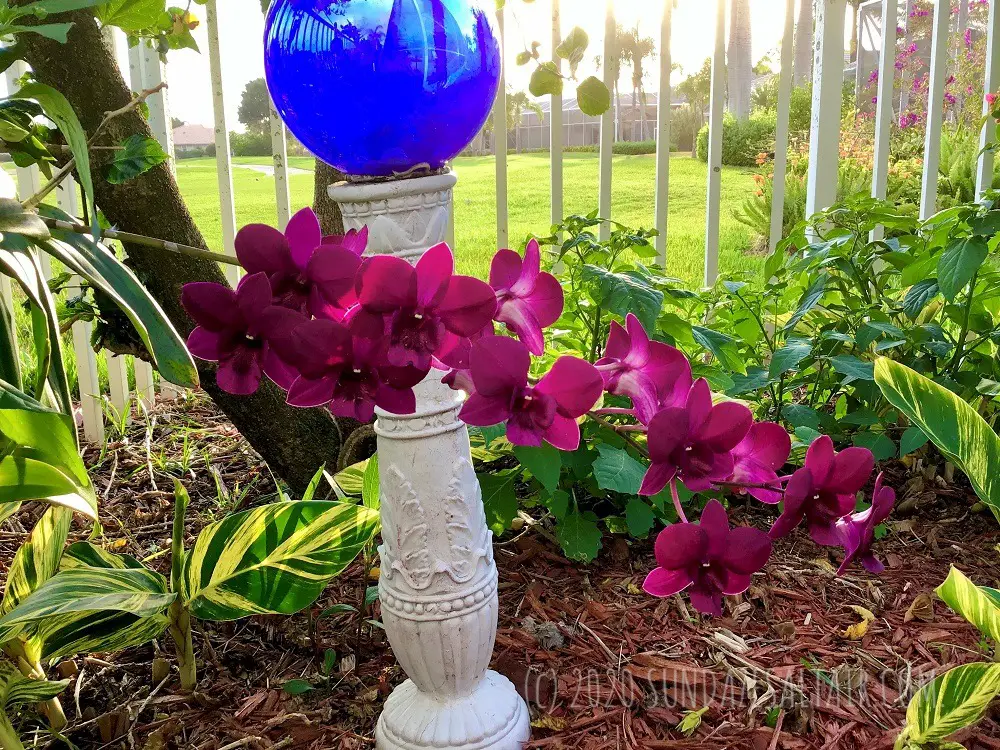
********
How Does The Dendrobium Phalaenopsis Compare To The Dendrobium Nobile?
Dendrobium Phalaenopsis Vs, Dendrobium Nobile: Warm Vs. Cool Weather Preferences
While both inhabit the same Dendrobium family of orchids, each one has a number of distinguishing features. First, the leaves of the Dendrobium Phalaenopsis are stiffer and slightly darker in color than the more flexible and lighter Dendrobium Nobile leaves. As far as canes go, the Dendrobium Phalaenopsis is known for possessing harder canes while the Nobile exhibits softer canes.
Interestingly, Nobiles are notable for being more cold tolerant than the Dendrobium Phalaenopsis, with Nobiles actually requiring a cool period to help promote maximum blooming. Therefore, if you live in a warm climate and are planning on growing your orchid outdoors, the Dendrobium Phalaenopsis would be the better choice. Similarly, the Nobile should be at home if you live and garden in a slightly cooler growing zone.
Also, while the Dendrobium Phalaenopsis grows flowers on a stem growing from the top of its canes, the Nobile tends to grow flowers directly on its canes.
********
The Dendrobium Phalaenopsis – One Of The Easiest Orchids To Rebloom
Should You Cut The Canes Of A Dendrobium Phalaenopsis When It Loses Its Flowers?
Short answer, never! When the blooming period of a Dendrobium Phalaenopsis is over and its canes are bare of flowers, do not under any circumstances cut them. The older canes can absolutely rebloom again for years and each cane can actually produce multiple flower spikes. So, please leave these canes alone even if you are not fond of their bare appearance. The more canes you have on your Dendrobium Phalaenopsis the more spectacular the possible explosion of flowers.
Plus, since these canes serve as storage for water and nutrients, the more canes your plant has, the more self-sustaining it can be. So, leave those canes alone and just think of how many more flowers you will have in the future.
Should You Cut The Spikes Or Flower Stems Of A Dendrobium Phalaenopsis?
I often neglect to cut the old flower spikes of my outdoor hanging Dendrobium Phalaenopsis. The old spike will fall off eventually when it’s ready. Some growers remove old spikes to help neaten up the plant, and to direct the plant’s energy to produce more growth. Once flowers are done blooming, you may trim old flower spikes, but do not go near any canes.
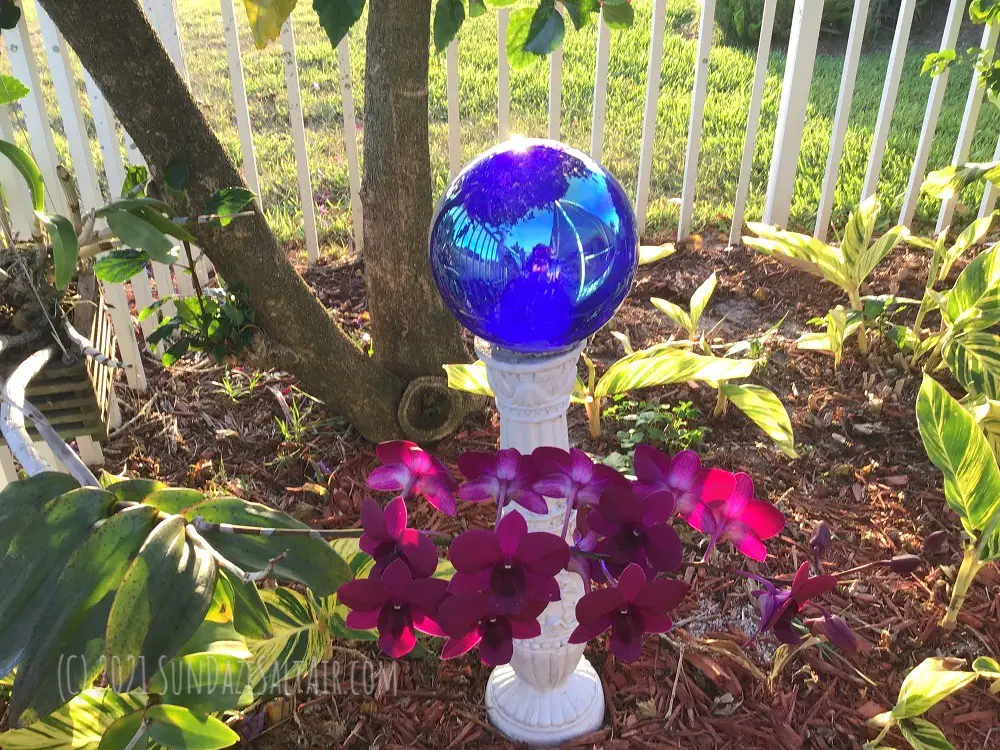
********
How To Care For A Dendrobium Phalaenopsis
What Are The Temperature Requirements Of A Dendrobium Phalaenopsis?
Dendrobium Phalaenopsis Prefers Warm Temperatures
Dendrobium Phalaenopsis orchids originated in tropical Southeast Asia, Australia and New Zealand where they experience warm weather year round, so they definitely prefer warm to hot temperatures to reach their fullest blooming potential. Unlike Nobiles, which originated around the Himalayas, Dendrobium Phalaenopsis does not benefit from cold temperatures for blooming.
Ideal Temperatures For Dendrobium Phalaenopsis
Ideal day time temperatures fall anywhere between 70-86°F (21-30°C), while preferable nighttime temperatures are between 62-66°F (16.5-18.5°C). Just don’t let temperatures fall below 50°F (10°C) for any length of time.
Grow Your Dendrobium Phalaenopsis Outside When Weather Permits
This preference for warmth makes Dendrobium Phalaenopsis perfect for outdoor gardens during steamy summer months, or year round if you happen to live in a tropical climate like I do. At the same time, as far as orchids go, these guys are pretty hardy so, depending where you live, you may be able to grow your Dendrobium Phalaenopsis outdoors from spring all the way into fall. Just be sure to bring your plant inside if the temperature drops below 50° F (10° C) and definitely before the first sign of frost.
**Learn more all about how to grow orchids in cold winter weather here…
********
What Are The Light Requirements Of A Dendrobium Phalaenopsis?
Dendrobium Phalaenopsis orchids enjoy and tolerate bright sunlight quite well compared to many orchids. However, exposure to harsh, direct sunlight should always be avoided. Instead, choose a location where sunlight is filtered or shaded mid-day for the ideal health and blooming conditions of your plant. Morning sunlight is ideal as some direct filtered sun is essential for flowering.
How To Protect Your Dendrobium Phalaenopsis From Harsh Summer Light Outdoors
Like most orchids, the Dendrobium Phalaenopsis can sustain burns to it leaves if it receives too much intense direct light especially in summer; or, if it is not gradually acclimated to a new sunny spot. I happen to live in a bright subtropical climate, yet my Dendrobium Phalaenopsis is content even on the hottest days of summer. How do I manage this? I hang my Dendrobium Phalaenopsis on the branches of a large, shady hibiscus tree. This tree hanging arrangement ensures my orchid gets plenty of hours of light throughout the day while filtering out the harshest mid-day sun.
If you live in a tropical environment or enjoy warm summers, try placing your Dendrobium Phalaenopsis in a hanging basket under a tree canopy to bask in the fresh air and sun-dappled light.
TIP: In summer, always make sure your Dendrobium Phalaenopsis is shaded, whether by trees or a covered patio or lanai, during the hottest part of the day,. Any exposure to bright, direct sunlight should ideally occur early in the morning so try hanging your plant so it faces East.
How To Protect Your Dendrobium Phalaenopsis From Harsh Summer Light Indoors
If your Dendrobium Phalaenopsis is indoors, consider investing in some light filtering curtains for any windows with intense Southern exposure during summer; or simply move your Dendrobiums to an Eastern facing window for the season.
How Much Light Does Your Dendrobium Phalaenopsis Need In Winter?
In low light winter, spring and fall, your Dendrobium Phalaenopsis will be better able to tolerate direct sunlight. If you live in high Northern latitudes, a Southern-facing window may provide that little bit of extra light exposure your plant needs. In the tropics where I reside, I keep my Dendrobium Phalaenopsis hanging from a tree branch all winter long with no complaints. In this cozy, partially shaded spot, my orchid happily receives tropical winter sunlight.
How Do I Know If My Dendrobium Phalaenopsis Is Getting Too Much Sunlight?
If you notice the leaves of your Dendrobium Phalaenopsis start to wrinkle and take on a shriveled appearance, try moving your plant to a shadier spot and see if its leaves recover. Also, if you observe brown, yellow, or even white spots on your plant’s leaves, immediately relocate your plant to an area with less intense light conditions.
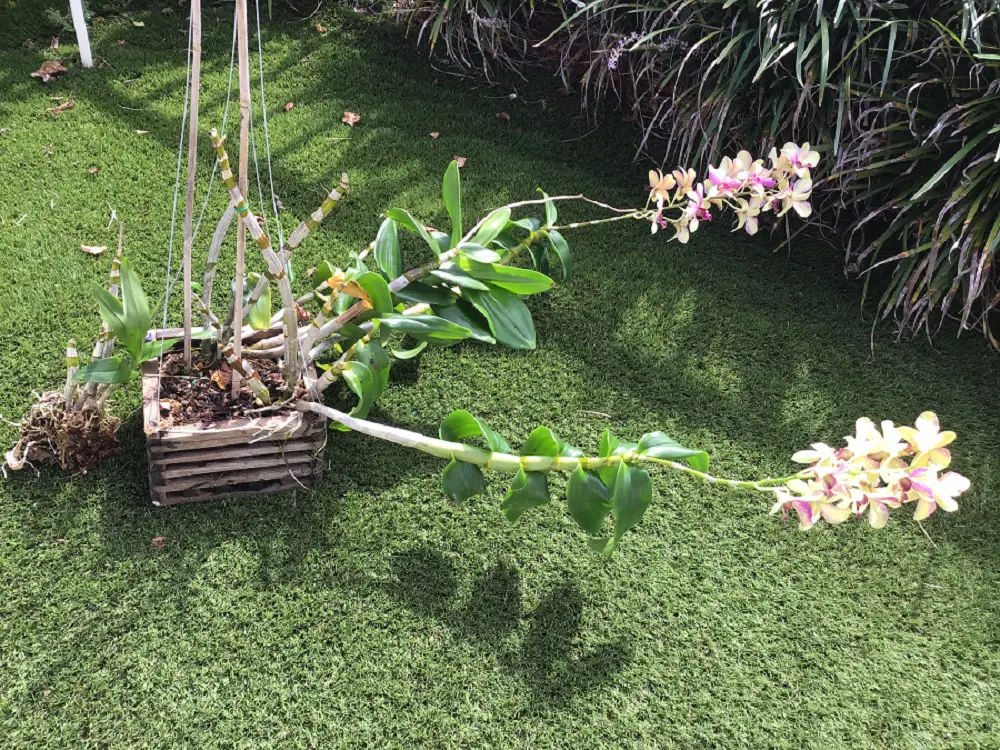
********
How Much Water Does A Dendrobium Phalaenopsis Need?
Dendrobium Phalaenopsis Is More Drought-Tolerant Than Many Other Orchids
I have a confession to make… about my outdoor Dendrobium Phalaenopsis orchids, that is… I never water them. That’s right, not even in the winter when we have our very long dry season. How am I able to do this? Well, first, as I stated, I do keep my plant outdoors in a subtropical climate where it has access to nature’s own humidity and rain, especially in our rainy summer season. So, unless you have ideal conditions, I would recommend that you water your plant about twice a week during its growing period. Cutting back to once a week may be more than sufficient in winter.
Also, the Dendrobium Phalaenopsis is an orchid you never want to overwater as it prefers to be quite dry before watering. Third, and importantly, as stated above, the Dendrobium Phalaenopsis possesses the unique ability to store water as a reserve for future dry spells.
Dendrobium Phalaenopsis & Seasonal Watering
Again, it is important to note how the weather conditions where I live, which include hot, humid summers with near daily rain and warm, dry winters almost perfectly mimics the Dendrobium Phalaenopsis growing pattern and preferences. Summer rain is used and stored in the active summer growing season, which the plant can also make use of in the slow winter phase.
Any Other Considerations For A Dendrobium Phalaenopsis During The Summer Growing Season?
As always, make sure you provide maximum drainage so your plant’s roots get a chance to dry out. This is a big reason why I keep my Dendrobium Phalaenopsis in hanging baskets for the excellent drainage they provide. Learn how to grow your orchids in baskets here.
Water Your Dendrobium Phalaenopsis Less In Winter
Like a hump on a camel, the cane reserves, along with the fact that Dendrobium Phalaenopsis is not growing as much, allows these orchids to sustain themselves during an extended dry spell. Monitor the canes of your Dendrobium Phalaenopsis and provide water if you begin to see them shrivel slightly, about once a week to maybe even once every two weeks.
What Are Some Signs You Need To Water Your Dendrobium Phalaenopsis?
As stated above, if you see your Dendrobium Phalaenopsis’s pseudobulbs (canes) or its leaves start to shrivel, give it some water. This is nothing to be too alarmed about as a Dendrobium Phalaenopsis will usually quickly recover and begin to store water again.
********
How Much Humidity Does A Dendrobium Phalaenopsis Need? Air Circulation?
As a warm weather orchid, try to mimic the conditions of the Dendrobium Phalaenopsis’s native tropical environment.
Increased Humidity Requires Increases Ventilation
The Dendrobium Phalaenopsis does well with a humidity level around 50 to 60%, a little less than other orchids such as Vandas that require even higher humidity. But, as with any high humidity and temperatures, be sure to satisfy the desire of Dendrobium Phalaenopsis for excellent air circulation around their roots. This should help to minimize any chance of disease or rot, and is one reason open-air hanging baskets or growing on trees is an ideal way to grow these orchids.
Mimic Tropical Humidity Indoors
If grown indoors, an easy way to create some humidity around your Dendrobium Phalaenopsis is by placing it elevated above a tray filled with water and rocks. As long as your plant doesn’t make contact with the water, this humidity tray should provide necessary moisture in the surrounding air without threat of rot. You can also use a fine mist water spray bottle to gently mist the roots of your plant.
To read more about Dendrobium Phalaenopsis culture, visit the American Orchid Society website.
Conclusion: Follow These Simple Tips To Care For A Dendrobium Phalaenopsis Orchid — One Of The Easiest Orchids To Grow
With the Dendrobium Phalaenopsis orchid, you most certainly get your money’s worth. Not only is it one of the easiest exotic orchids to grow and care for, but if you follow these easy care tips, you will be rewarded with multiple sprays alight with the most uniquely stunning and vibrant flowers. With the ability to bloom multiple flower stems at the same time, everyone will want to know your secret. Little do they know that, with minimum care and effort on your part, your Dendrobium Phalaenopsis will treat you to displays of delicate, spectacularly beautiful flowers for weeks at a time…
How do you grow your own Dendrobium Phalaenopsis for maximum health & blooming? Share your best tips in the comments.
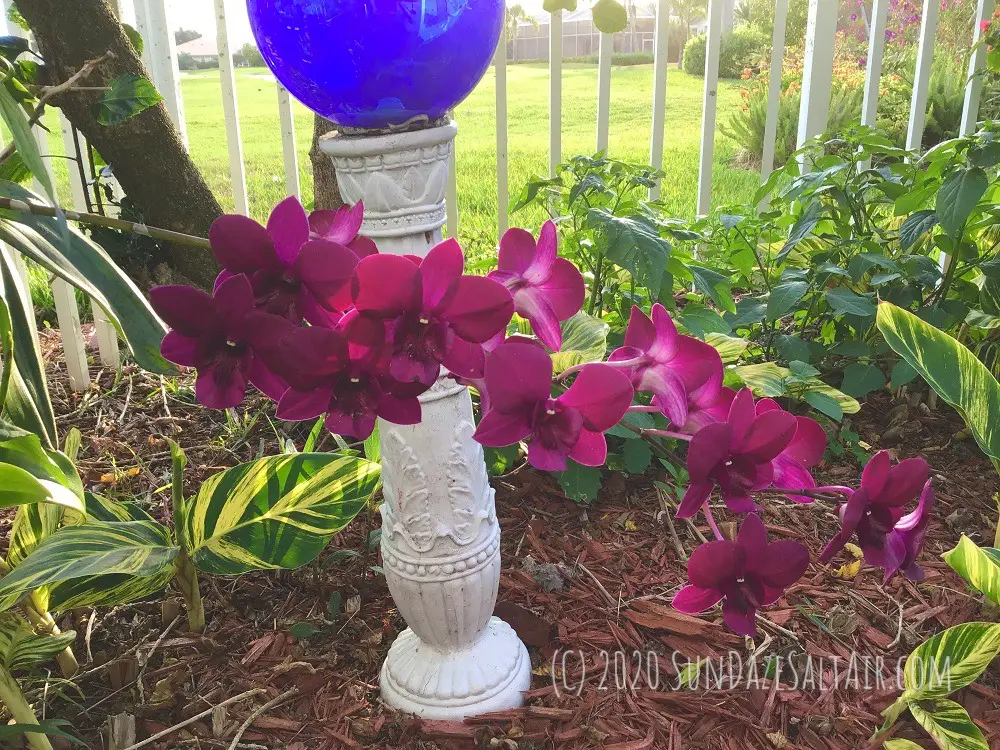
********


You May Also Like
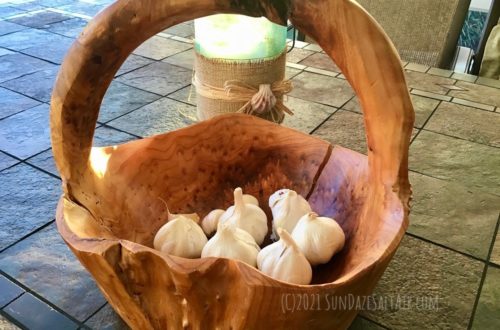
How To Grow Your Own Garlic This Winter For Amazing Flavor & Health Benefits
November 12, 2021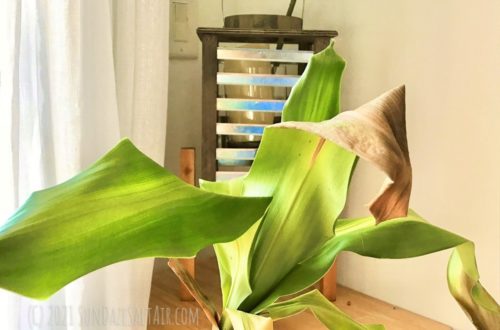
Why Are The Leaf Tips Of My Corn Plant (Dracaena) Brown & Drooping? How To Revive A Drooping Corn Plant
August 13, 2021